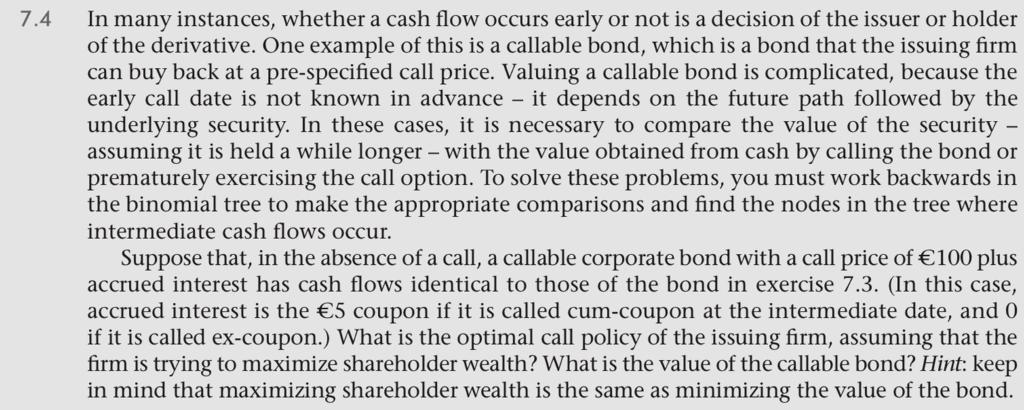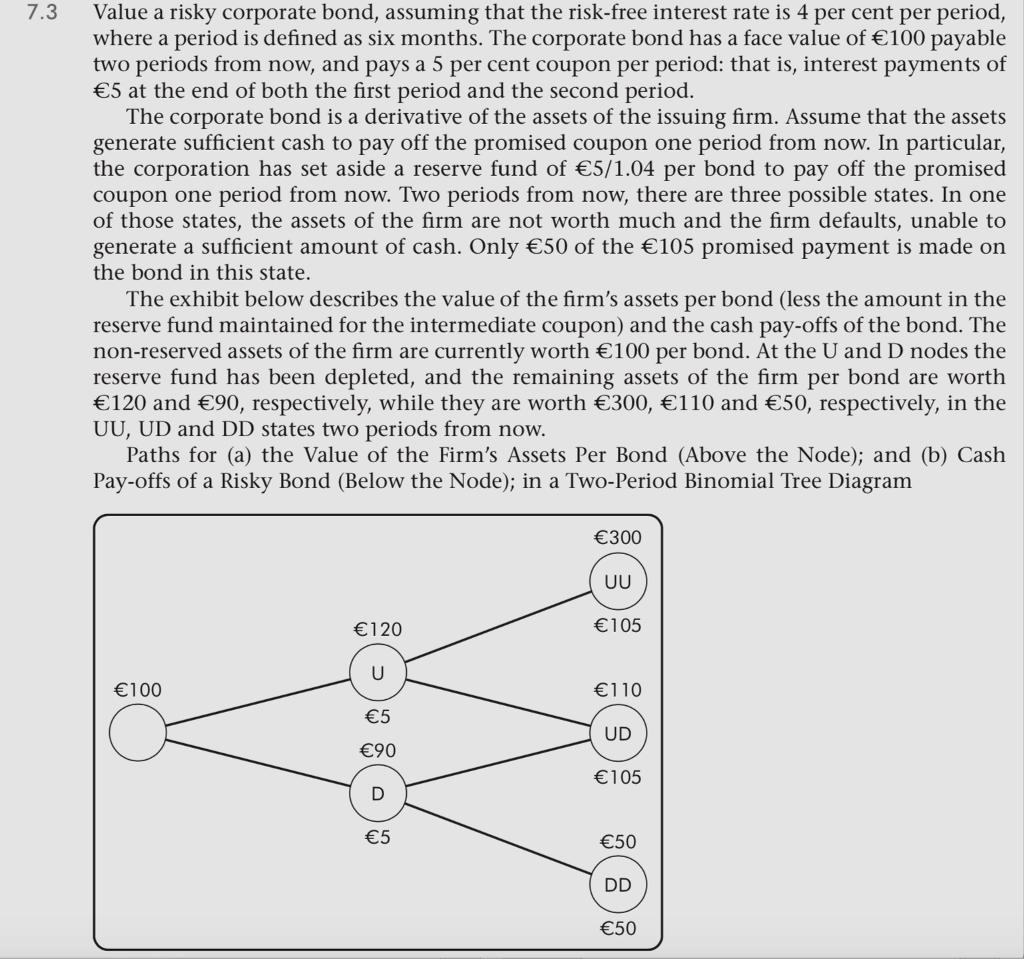Answered step by step
Verified Expert Solution
Question
1 Approved Answer
7.4 In many instances, whether a cash flow occurs early or not is a decision of the issuer or holder of the derivative. One


7.4 In many instances, whether a cash flow occurs early or not is a decision of the issuer or holder of the derivative. One example of this is a callable bond, which is a bond that the issuing firm can buy back at a pre-specified call price. Valuing a callable bond is complicated, because the early call date is not known in advance - it depends on the future path followed by the underlying security. In these cases, it is necessary to compare the value of the security assuming it is held a while longer - with the value obtained from cash by calling the bond or prematurely exercising the call option. To solve these problems, you must work backwards in the binomial tree to make the appropriate comparisons and find the nodes in the tree where intermediate cash flows occur. Suppose that, in the absence of a call, a callable corporate bond with a call price of 100 plus accrued interest has cash flows identical to those of the bond in exercise 7.3. (In this case, accrued interest is the 5 coupon if it is called cum-coupon at the intermediate date, and 0 if it is called ex-coupon.) What is the optimal call policy of the issuing firm, assuming that the firm is trying to maximize shareholder wealth? What is the value of the callable bond? Hint: keep in mind that maximizing shareholder wealth is the same as minimizing the value of the bond. 7.3 Value a risky corporate bond, assuming that the risk-free interest rate is 4 per cent per period, where a period is defined as six months. The corporate bond has a face value of 100 payable two periods from now, and pays a 5 per cent coupon per period: that is, interest payments of 5 at the end of both the first period and the second period. The corporate bond is a derivative of the assets of the issuing firm. Assume that the assets generate sufficient cash to pay off the promised coupon one period from now. In particular, the corporation has set aside a reserve fund of 5/1.04 per bond to pay off the promised coupon one period from now. Two periods from now, there are three possible states. In one of those states, the assets of the firm are not worth much and the firm defaults, unable to generate a sufficient amount of cash. Only 50 of the 105 promised payment is made on the bond in this state. The exhibit below describes the value of the firm's assets per bond (less the amount in the reserve fund maintained for the intermediate coupon) and the cash pay-offs of the bond. The non-reserved assets of the firm are currently worth 100 per bond. At the U and D nodes the reserve fund has been depleted, and the remaining assets of the firm per bond are worth 120 and 90, respectively, while they are worth 300, 110 and 50, respectively, in the UU, UD and DD states two periods from now. Paths for (a) the Value of the Firm's Assets Per Bond (Above the Node); and (b) Cash Pay-offs of a Risky Bond (Below the Node); in a Two-Period Binomial Tree Diagram 100 120 U 5 90 D 5 300 UU 105 M 110 UD 105 50 DD 50
Step by Step Solution
★★★★★
3.35 Rating (155 Votes )
There are 3 Steps involved in it
Step: 1
students name institution instructors name course title due date Using the binomial option pricing m...
Get Instant Access to Expert-Tailored Solutions
See step-by-step solutions with expert insights and AI powered tools for academic success
Step: 2

Step: 3

Ace Your Homework with AI
Get the answers you need in no time with our AI-driven, step-by-step assistance
Get Started


